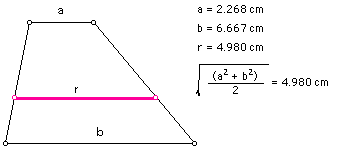

Given trapezoid KLMN, with KL // NM, KL = a, and NM = b.
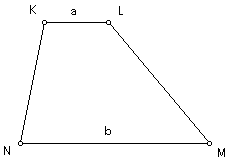
Construct a line perpendicular to base MN at point M. Construct a circle with center at point M and with radius = a. Construct the intersection of this circle with the previous line and call it point R. Construct segment RN. By the Pythagorean Theorem, RN = sqrt(a^2 + b^2).
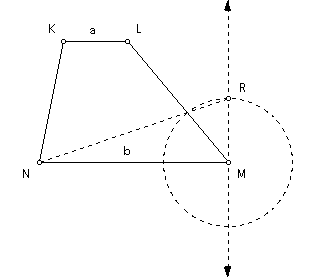
Construct the midpoint of segment RN and call it point S. Construct a line perpendicular to segment RN at point S. Construct a circle with center at point S and passing through point N. Construct the intersection of this circle and the perpendicular line and call it point T. Construct segment NT. By construction, SN = ST = (sqrt(a^2 + b^2))/ 2. By the Pythagorean Theorem, NT = sqrt((a^2 + b^2)/ 2).
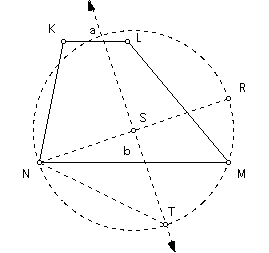
Construct a circle with center at point N and passing through point T. Construct the intersection of this circle and base NM and call it point U. Since segments NT and NU are radii of the same circle, then NT = NU = sqrt((a^2 + b^2)/ 2).
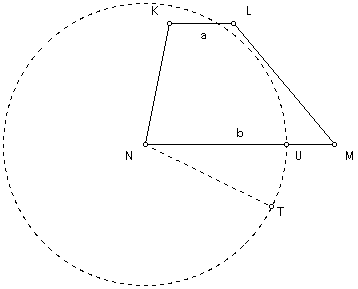
Construct a line parallel to leg KN through point U. Construct the intersection of this line and leg LM and call it point Q. Construct a line parallel to base NM through point Q. Construct the intersection of this line and leg KN and call it point P. By construction, quadrilateral PQUN is a parallelogram, and so PQ = NU = sqrt((a^2 + b^2)/ 2).
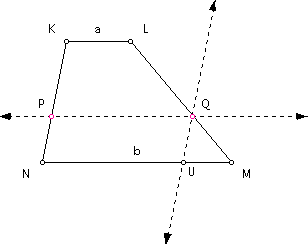
Construct segment PQ. The length of this segment is the root-mean-square, "r," of the bases KL and NM.
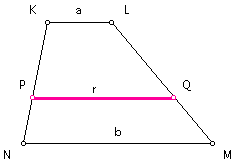
Double check the construction by taking measurements and using the equation for finding the root-mean-square.
